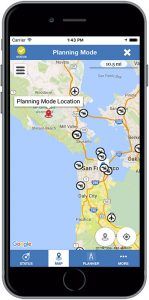There are a lot of good reasons to find out how to become a drone pilot, but if you are looking to increase workforce opportunities, the top reason could be that the drone train may be coming. If a spike in patent requests are a source for predicting a job market about to boom, drone patents filed with the World Intellectual Property Office for 2016-2017 quadrupled from those filed in the prior year, according to a New Zealand news report.
Patent industry experts said that major developments in drone adoption are likely to follow. Business consultants indicate their clients are considering use of the new technology:
There’s been a big supply push from the drone manufacturers and now the supply and demand sides are starting to meet,” said Murray Raisbeck of accounting firm KPMG.
Demand for drones is a demand for drone operators. In most instances, each drone requires an individual operator, according to Inc.
Every few new drones create at least one job, at a minimum, to maintain, deploy and operationalize the asset, so we’re looking at a new job force of a few hundred thousand created in just a few years,” wrote Lisa Calhoun, general partner at Valor Ventures and board member of Women Who Code and a columnist for Inc.
Cities and regions that foster drone knowledge and skills can be part of the emerging drone operator workforce and other opportunities -- in economic development, resilience and more.
Where the Drone Jobs are At
For certified drone pilots there are mapping, weather, agricultural, public safety, search and rescue, environmental and industrial monitoring, mining, surveillance, film and television, insurance industry, potentially delivery and other opportunities for certified drone pilots to test and provide services, according to National Georgraphic and other sources referenced.
Qualified drone pilots work with engineers and developers, and have the potential to earn a U.S. median household income (based on the U.S. Bureau of Census 2016 analysis), according to a CNBC report.
Jordan Rising, director of flight and technology for Flight Evolved said, “Most of these companies are hiring pilots who can likely expect to make between $50,000 and $70,000, depending on their expertise and the equipment they are operating.”
How to Become a Drone Pilot
The Federal Aviation Administration requires all drone pilots have a Remote Pilot Airman Certificate issued under FAA’s 14 CFR part 61, and a successful flight review within the previous 24 months, according to the agency’s Unmanned Aircraft Systems (UAS) pilots website.
#1 Be Eligible to Apply and Receive the FAA Certificate
A drone pilot candidate must:
- Be at least 16 years old
- Be able to read, speak, write and understand English
- Be in a physical and mental condition to safely operate UAS
- Pass the initial aeronautical knowledge exam at an FAA-approved knowledge testing center
- Pass a background check
#2 Pass the Remote Pilot Certificate Exam
The FAA website specifies 12 areas that drone pilots must demonstrate knowledge:
- Applicable regulations relating to small UAS rating privileges, limitations and flight operation
- Airspace classification and operating requirements, and flight restrictions affecting small unmanned aircraft operation
- Aviation weather sources and effects of weather on small unmanned aircraft performance
- Small unmanned aircraft loading and performance
- Emergency procedures
- Crew resource management
- Radio communication procedures
- Determining the performance of small unmanned aircraft
- Physiological effects of drugs and alcohol
- Aeronautical decision-making and judgment
- Airport operations
- Maintenance and preflight inspection procedures
Access the knowledge test study guide on FAA’s website.
Preview and register for the FAA Part 107 Small UAS Course Introduction on FAASafety.gov.
Explore a step-by-step guide to FAA Part 107 on UAV Coach’s website.
#3 Pass the Flight Review
Then, there is the flight training. The number of accident-free hours logged is important for all pilots, including drone pilots.
Many of the drone pilots who can command the upper salary range are ex-helicopter pilots, not novices. Weekend drone gigs, or contract work, can net $2,500 to $7,000 per job, depending on the type of role,” according to CNBC.
It’s important to practice flying a drone, even if FAA rules do not specify a number of hours required to become a certified drone pilot. A UAS pilot on a UAV Coach forum noted how difficult it is to regulate experience:
“300 hours flying a Phantom at the city park cannot compare with 75 hours flying construction site, inspections, public safety or powerlines. Very different experience levels,” Uaviator53 wrote, adding that a U.S. Customs drone operator job post indicated 1,500 hours of flight experience.
Drone operator training was initially provided by the military, but there are commercial drone schools and academic institutions offering multi-year UAS training programs and training for certification.
Find drone pilot training on the Drone Pilot Training Center website.
In practice, drone operators must keep their drones under 400 feet above ground level, in Class G airspace and operate during daylight hours.
 To help track drone flights under FAA regulations, the agency has developed the B4UFly app for drone operators to consult in their preflight operations.
To help track drone flights under FAA regulations, the agency has developed the B4UFly app for drone operators to consult in their preflight operations.
#4 Register Drones & Stay Current
Any drone more than 0.55 lbs. must also be registered with the FAA.
The FAA Remote Pilot Airman Certificate is valid for two years; re-certification requires online training or a knowledge test.












